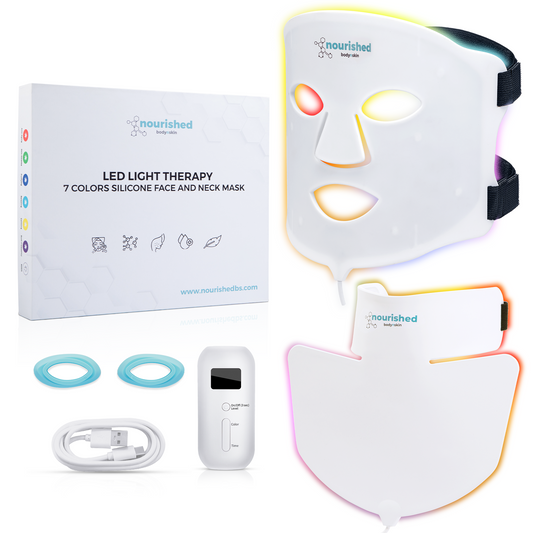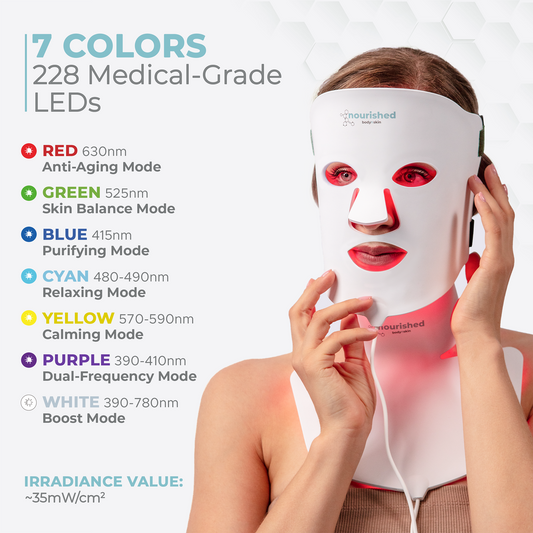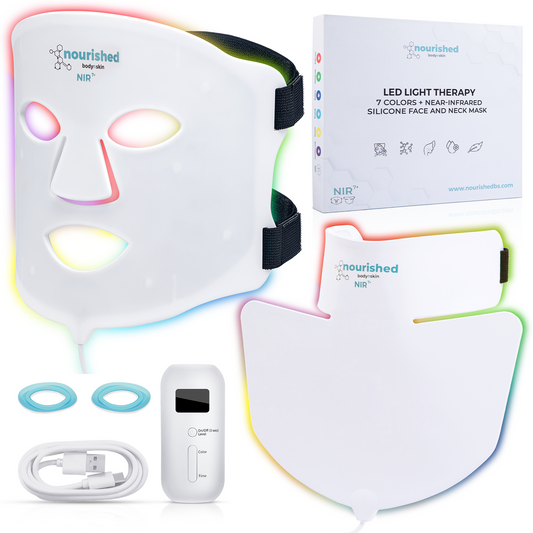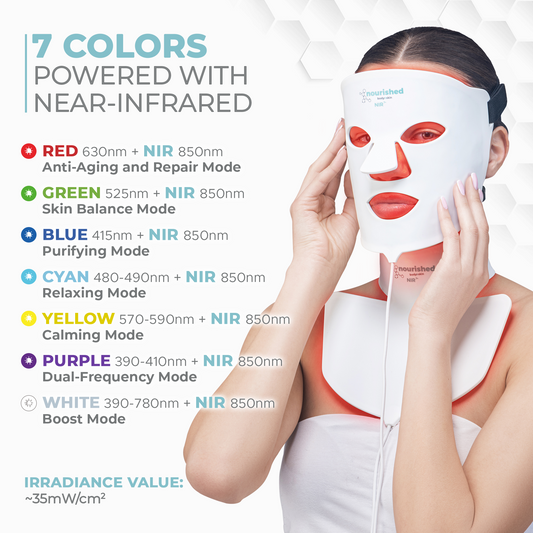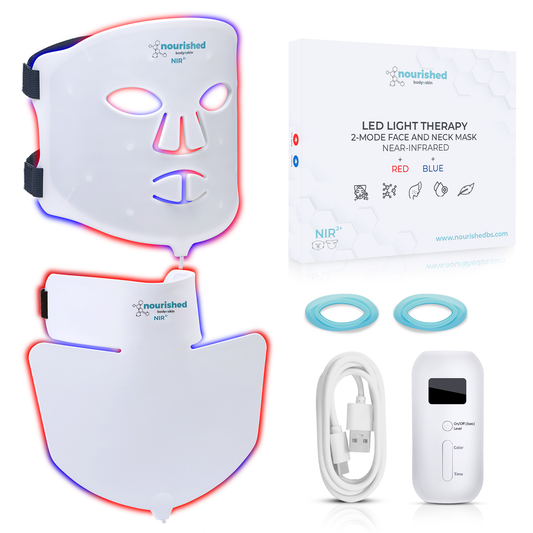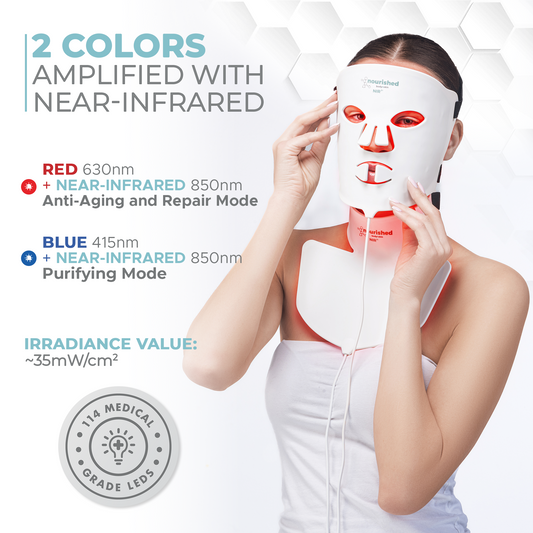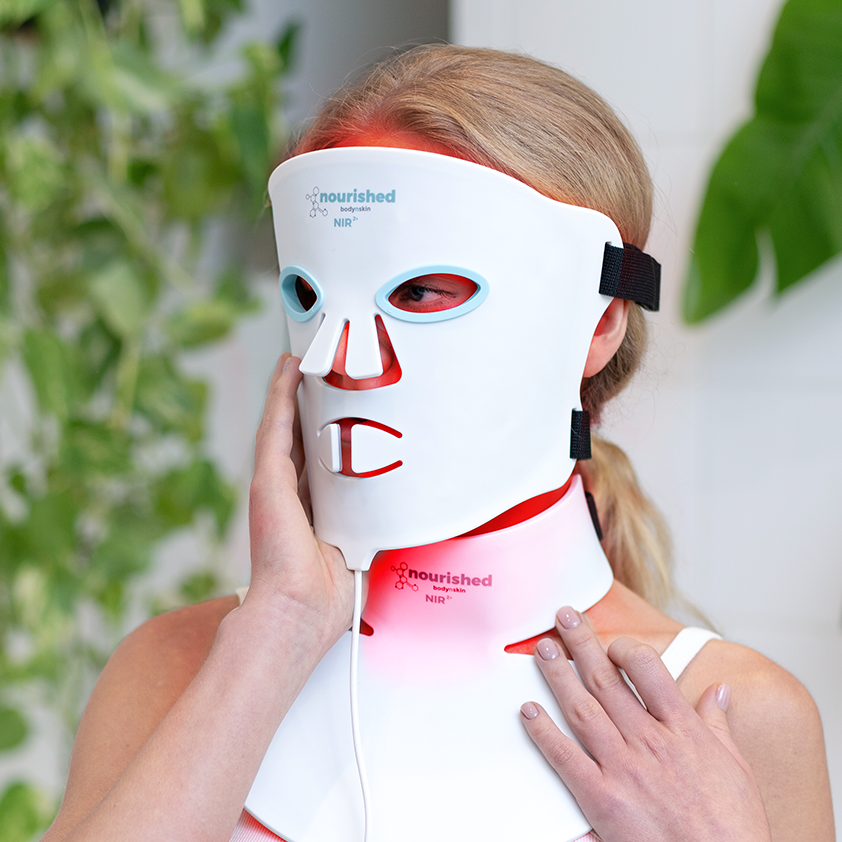Discover how to choose the best LED light color for your skin

As life becomes more and more demanding, our skin becomes an easy “casualty” of a hectic lifestyle. Physical, emotional, and mental exhaustion most manifest on our skin, making us look tired, wrinkled, and dehydrated.
With a plethora of skincare products available in the market, it can be daunting to choose which one would give us the results that we need. Moreover, each skin is unique, and there simply is no one-size-fits-all skincare product. This makes it fundamental to invest our time, effort, money, and patience to vet all the options available.
If you have the means to do so, a regular visit to the derma clinic is easily the surest (yet the most expensive) path to achieving your skincare goals. But what if this isn’t the case for you?
LED Light Therapy Mask Is The Way To Go
This is where the LED light therapy masks outperform the other beauty devices.

|
Light-emitting diodes can be customized according to the contour of a target treatment area and thus offer more treatment coverage at a relatively lower cost. |
Aside from these, LED light therapy masks are also easy to operate and assemble so you can do it all by yourself, anytime, anywhere.
Take a look at our quick buying guide and say goodbye to complicated, expensive beauty devices.
Now that you know the best product to avail, let’s help you walk through your skin goal bucket list so you’ll know how to achieve them, one hands-free session at a time.
Your Skin Goals Bucket List and How To Achieve Them
Our skin absorbs light in varying means depending on the wavelength. While it is true that the longer the wavelength, the deeper it penetrates the skin, its ability to be utilized by the cells in that particular depth isn’t always optimum for all cases.
|
In other words, each color has its specialty benefit, best achieved with consistency in timing, frequency, and duration towards the routine. |
Read more to know how to get the best results out of LED light therapy.
So, what LED light colors should you aim to use?
☑ Blue LED Light for a Clear, Blemish-Free Skin

|
Acne develops when skin pores get clogged with oil, dirt, and dead skin cells. |
When this happens, the bacteria C. acnes, which normally lives on the skin, grow and thrive in the clogged pores and eventually cause inflammation. The P. acnes bacteria contain molecules that react to light, like human and plant cells. It has been found that these light-reacting molecules have a powerful absorption peak at 415nm, the wavelength of blue light.
While other light wavelengths work by directly causing an activation reaction within the skin, blue light works “indirectly.”
|
That means when the blue light irradiates an acne-infested skin, it destroys the C. acnes bacteria, not by causing a direct defense mechanism in the skin cells. |
This makes blue light a perfect partner for your breakout-prone skin.
☑ Green LED Light for a Calm, Harmonized Complexion

Green light travels up to 525nm deep into the skin, where the epidermis and the upper layers of the dermis are. Studies suggest that green light targets the melanocytes in these areas, the cells that produce melanin, which is the substance that gives color to our eyes, hair, and skin.
|
Thus, green light is said to help even out skin tone by improving different forms of hyperpigmentation, such as age spots and sun spots. |
Aside from that, green light is often associated with its calming effect that can indirectly positively affect the skin. As mentioned, stress and anxiety manifest in the skin by causing inflammation and other skin issues.
|
Studies found that incorporating the green LED light in the self-care regimen can alleviate episodic and chronic migraines and promote mental relaxation. This, in turn, relaxes the swollen capillaries in the face and the circles under the eyes and contributes to healthier skin overall. |
☑ Yellow LED Light for a Radiant, Sun-kissed Glow
 Yellow light, with a wavelength range of 570nm to 590nm, reaches the thin top layer of the dermis, the inner layer of the skin, responsible for delivering nutrients to the skin's outer layer and controlling the skin's temperature.
Yellow light, with a wavelength range of 570nm to 590nm, reaches the thin top layer of the dermis, the inner layer of the skin, responsible for delivering nutrients to the skin's outer layer and controlling the skin's temperature.
|
Stimulating the skin with yellow LED light enhances lymphatic drainage and detoxification by improving skin respiration and hydration. |
Yellow also is much more highly absorbed in epidermal melanin than the red light. Thus, yellow light is best applied to reduce melanin production caused by sun exposure, which can lead to cancer in the worst-case scenario.
|
If you want gentle suncare for your sensitive skin that reduces redness from premature sun exposure and the consequent pigmentation post-exposure, yellow LED light is the best way to go. |
☑ Red LED Light for a Fresh, Youthful Vibrance

Aging and the changes it brings to our body are a natural phase of life.
It’s understandable that this truth can be both comforting and scary. Seeing the fine lines, wrinkles, and sagging skin show up while we feel the effects within, affecting our ability to do things, can cause us stress.
Since its discovery, red LED light is by far the most studied wavelength that effectively addresses the signs of aging.
|
With its ability to reach up to 700nm deep into the skin and peak absorption of 633nm, red LED light can stimulate collagen production, protein synthesis, blood circulation, and cellular reproduction. |
These actions result in an improved appearance of fine lines and wrinkles and allow for better topical product absorption.
|
Red LED light is also known for its excellent anti-inflammatory properties, which aid in treating inflammatory skin conditions such as psoriasis or acne, thereby reducing redness and improving healing speed. |
☑ Near-Infrared LED Light for a Robust, Revitalized Healing
So far, the wavelengths we’ve tackled belong to the visible light spectrum. Now, let’s tackle the invisible light spectrum, particularly the near-infrared wavelength of up to 850nm. Unlike the previous wavelengths, the near-infrared wavelength can reach beyond the skin cells and penetrate deeper into the body’s tissues.
|
This makes near-infrared LED light ideal for cellular repair and regeneration, aiding muscle recovery, joint pain, and nerve damage. |
Furthermore, near-infrared is involved in the blood flow, flow of nutrients and oxygen into the treated area, and provides highways for the wound-healing cells to reach there.
|
Hence, near-infrared LED light efficiently enhances the remodeling stage of wounds and allows for a less prominent appearance of scars as it ensures a better linear realignment and reconnection of collagen. |
Conclusion
The increasing availability of LED light therapy devices in the market is a sure way of telling that this derma technology works. These devices used to be gigantic and were only available in the salon and aesthetic clinics. But because of the rising demand brought about by the visible results with zero downtime, these are now slowly emerging as portable yet cheaper beauty products for everyone.
However, it is essential to note that there is no universally “better” wavelength than the others. In fact, combinations of specific wavelengths are often applied to achieve optimized results.
Lastly, the efficacy of therapy has to consider the specific conditions of the individual being treated, the duration, intervals, and frequency of treatment, and the individual’s response to the treatment. If you want to be sure, we’re here to help you explore the proven and effective ways to maximize the therapeutic effects of LED light therapy.

